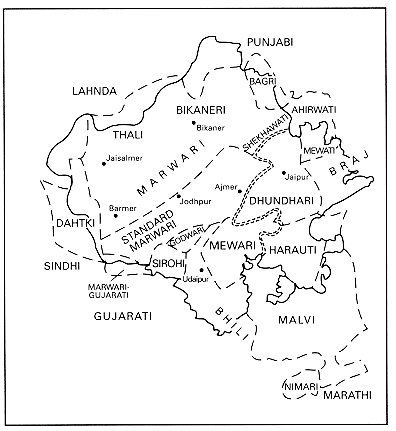Mewari Language on:
[Wikipedia]
[Google]
[Amazon]
 Mewari is an Indo-Aryan language of the Rajasthani group. It is spoken by about five million speakers in Rajsamand, Bhilwara,
Mewari is an Indo-Aryan language of the Rajasthani group. It is spoken by about five million speakers in Rajsamand, Bhilwara,
Centre for Rajasthani Studies
{{DEFAULTSORT:Mewari Language Rajasthani languages Languages of India Languages of Rajasthan Mewar Hindi languages
 Mewari is an Indo-Aryan language of the Rajasthani group. It is spoken by about five million speakers in Rajsamand, Bhilwara,
Mewari is an Indo-Aryan language of the Rajasthani group. It is spoken by about five million speakers in Rajsamand, Bhilwara, Udaipur
Udaipur () (ISO 15919: ''Udayapura''), historically named as Udayapura, is a city and Municipal corporation (India), municipal corporation in Udaipur district of the state of Rajasthan, India. It is the administrative headquarter of Udaipur dis ...
, Chittorgarh and Pratapgarh districts of Rajasthan
Rajasthan (; lit. 'Land of Kings') is a state in northern India. It covers or 10.4 per cent of India's total geographical area. It is the largest Indian state by area and the seventh largest by population. It is on India's northwestern s ...
state and Mandsaur, Neemuch
Neemuch or Nimach is a town in the malwa region. Neemuch crowns the north western part of MP. It has been also referred to city of Nature and Peace. The town shares its northwestern border with the state of Rajasthan and is the administrati ...
districts of Madhya Pradesh
Madhya Pradesh (, ; meaning 'central province') is a state in central India. Its capital city, capital is Bhopal, and the largest city is Indore, with Jabalpur, Ujjain, Gwalior, Sagar, Madhya Pradesh, Sagar, and Rewa, India, Rewa being the othe ...
state of India.
There are 31 consonants
In articulatory phonetics, a consonant is a speech sound that is articulated with complete or partial closure of the vocal tract. Examples are and pronounced with the lips; and pronounced with the front of the tongue; and pronounced w ...
, 10 vowels
A vowel is a syllabic speech sound pronounced without any stricture in the vocal tract. Vowels are one of the two principal classes of speech sounds, the other being the consonant. Vowels vary in quality, in loudness and also in quantity (l ...
and 2 diphthongs
A diphthong ( ; , ), also known as a gliding vowel, is a combination of two adjacent vowel sounds within the same syllable. Technically, a diphthong is a vowel with two different targets: that is, the tongue (and/or other parts of the speech ...
in Mewari. Intonation is prominent. Dental fricative
The dental fricative or interdental fricative is a fricative consonant pronounced with the tip of the tongue against the teeth. There are several types (those used in English being written as ''th''):
*Voiced dental fricative - as in the Englis ...
is replaced by glottal stop at initial and medial positions. Inflection
In linguistic morphology, inflection (or inflexion) is a process of word formation in which a word is modified to express different grammatical categories such as tense, case, voice, aspect, person, number, gender, mood, animacy, and ...
and derivation are the forms of word formation. There are two numbers—singular and plural, two genders—masculine and feminine, and three cases—simple, oblique, and vocative. Case marking is partly inflectional
In linguistic morphology, inflection (or inflexion) is a process of word formation in which a word is modified to express different grammatical categories such as tense, case, voice, aspect, person, number, gender, mood, animacy, an ...
and partly postposition
Prepositions and postpositions, together called adpositions (or broadly, in traditional grammar, simply prepositions), are a class of words used to express spatial or temporal relations (''in'', ''under'', ''towards'', ''before'') or mark various ...
al. Concord is of nominative
In grammar, the nominative case ( abbreviated ), subjective case, straight case or upright case is one of the grammatical cases of a noun or other part of speech, which generally marks the subject of a verb or (in Latin and formal variants of ...
type in the imperfective aspect
The imperfective ( abbreviated or more ambiguously ) is a grammatical aspect used to describe ongoing, habitual, repeated, or similar semantic roles, whether that situation occurs in the past, present, or future. Although many languages have a ge ...
but ergative in the perfective aspect
The perfective aspect ( abbreviated ), sometimes called the aoristic aspect, is a grammatical aspect that describes an action viewed as a simple whole; i.e., a unit without interior composition. The perfective aspect is distinguished from the i ...
. Nouns are declined according to their endings. Pronouns are inflected for number, person, and gender. Third person is distinguished not only in gender but also in remote-proximal level. There are three tenses—present, past, and future; and four moods
Mood may refer to:
*Mood (psychology), a relatively long lasting emotional state
Music
*The Mood, a British pop band from 1981 to 1984
* Mood (band), hip hop artists
* ''Mood'' (Jacquees album), 2016
* ''Moods'' (Barbara Mandrell album), 1978
...
. Adjective are of two types—marked or unmarked. Three participles are there—present, past, and perfect.Gusain, Lakhan.(2006). Mewari Grammar (LW/M 431). Munich: Limcom Gmbh. It has SOV word order.
Phonology
See also
*Rajasthani language
Rajasthani (Devanagari: ) refers to a group of Indo-Aryan languages and dialects spoken primarily in the state of Rajasthan and adjacent areas of Haryana, Gujarat, and Madhya Pradesh in India. There are also speakers in the Pakistani provinces ...
*List of winners of Sahitya Akademi Awards for writing in Rajasthani language
The Sahitya Akademi Award is the second-highest literary honor in India. The Sahitya Akademi, India's National Academy of Letters, aims at "promoting Indian literature throughout the world". The Akademi annually confers awards on writers of "t ...
* List of Rajasthani poets
* List of Indian poets#Rajasthani
References
External links
Centre for Rajasthani Studies
{{DEFAULTSORT:Mewari Language Rajasthani languages Languages of India Languages of Rajasthan Mewar Hindi languages